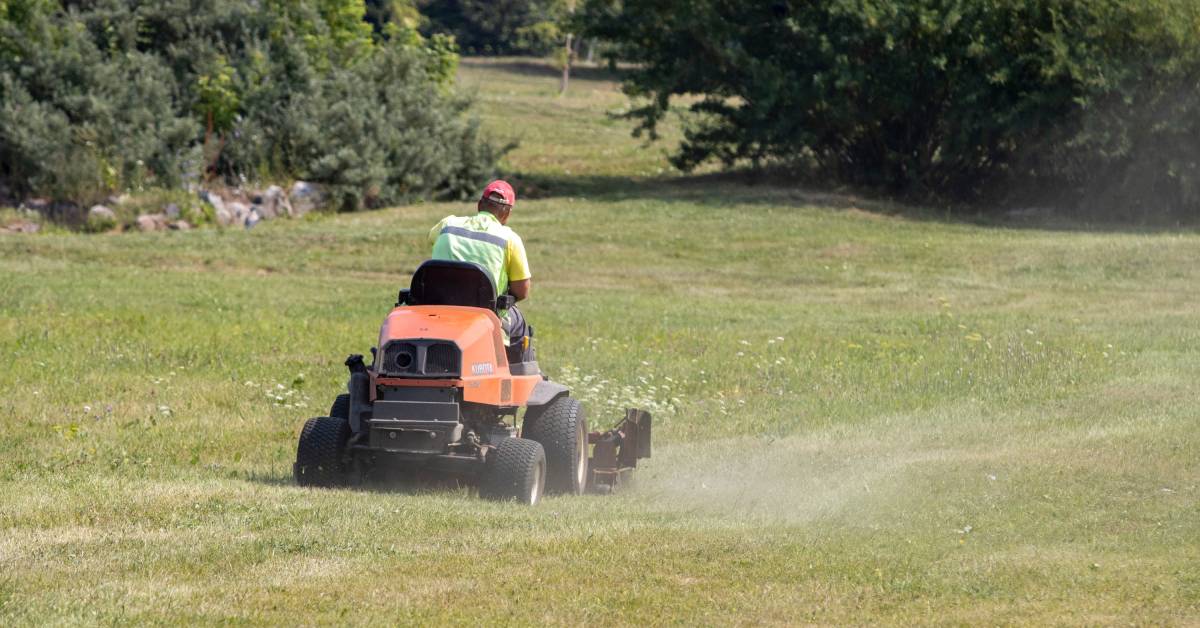
Spark plugs may seem like small components, but they play an integral role in the functionality of every internal combustion engine, including machines like lawn mowers and tractors. These tiny devices provide the spark that ignites the air-fuel mixture within the engine, making them crucial for starting your machinery smoothly and maintaining optimal performance.
Whether you’re a landscaper, a farmer, or just a homeowner with a lawn mower, it’s in your best interest to properly care for these spark plugs to ensure efficiency, durability, and performance from your machine. Below, we’ve compiled some helpful tips for spark plug maintenance in lawn mowers and tractors.
Recognizing the Signs of a Worn or Faulty Spark Plug
You can’t save a spark plug that has run its course, so the first thing you should know how to do is identify compromised tractor or lawn mower spark plugs. First, you might notice difficulty starting the machine as it sputters and struggles to turn over. This can be due to a weakened spark, preventing the engine from igniting efficiently.
Another common problem from faulty spark plugs is a lack of power and rough idle while the machine runs. The spark plugs are integral to your machine’s performance, so if it seems to be lagging and stalling more often, it’s a good idea to check the spark plugs.
Inspecting and Replacing Spark Plugs in Lawn Mowers and Tractors
Every lawn mower and tractor owner should know how to correctly inspect their machine’s spark plugs and replace them when needed.

Inspecting the Plugs
Start by gathering the necessary tools, including a socket wrench, a spark plug socket, and a feeler gauge. Begin the inspection by removing the spark plug wire, which is attached to the top of the spark plug. Next, use the socket wrench to carefully unscrew the spark plug from the engine.
After removal, examine the spark plug condition closely. Look for any visible damage, such as cracks or significant wear on the electrode, and use the feeler gauge to check the gap between the center and ground electrodes. If you find damage or see the gap is outside the plug’s specifications, you should adjust the gap or replace the spark plug immediately.
Installing a New Spark Plug
Installing a new spark plug into a lawn mower or tractor requires precision to ensure optimal engine performance. Begin by confirming that the new spark plug matches the specifications listed in your equipment’s manual, including the correct heat range and electrode gap. Carefully insert the new spark plug into the engine’s spark plug hole, turning it by hand at first to avoid cross-threading.
After tightening the plug, use a torque wrench to secure it according to the recommended torque settings in the equipment manual. This prevents over- or under-tightening, which causes performance issues. After securing the spark plug, reattach the spark plug wire by pressing it firmly onto the plug’s top terminal until it clicks into place, ensuring a complete electrical connection.
Prolonging Spark Plug Life and Enhancing Performance
Maintaining spark plugs goes beyond just replacing them when they’re worn out. To extend their life and improve the performance of your lawn mower or tractor, a few simple practices can make a big difference. Below are a few of our tips for spark plug maintenance in your lawn mower and tractor.
Use Premium Fuel
One essential tip for maintaining optimal engine performance is to use high-quality fuel. Premium fuel contains fewer impurities than regular fuel, which significantly reduces the chances of carbon buildup on the spark plug electrode. This helps your engine run smoother and can also improve fuel efficiency and extend the lifespan of your vehicle.
Clean the Spark Plug Regularly
Lawn mower and tractor owners must also regularly clean their machine’s spark plugs. Over time, carbon deposits can accumulate due to combustion, hindering the spark plug’s ability to generate a strong and consistent spark. To keep it in top shape, carefully clean the electrode with a wire brush or a spark plug cleaner to remove any buildup.
Check the Spark Plug Gap
Owners should also periodically check the spark plug gap using a feeler gauge. An incorrect gap can lead to misfires, reduced efficiency, and increased emissions. Ensuring that the gap remains within the recommended range is vital for optimal ignition performance.
Stabilize Fuel During Storage
Many owners will put their lawn mower or tractor into storage for the off-season. If you also store your machine for long periods, the spark plugs should use a fuel stabilizer during the extended period. This prevents fuel deterioration, which can lead to fouled spark plugs.
Inspect Spark Plug Connections
The connections of a spark plug are also crucial to its performance. Therefore, tractor and lawn mower owners should ensure these connections are secure, stable, and free from corrosion. Periodically remove the spark plug wire to inspect the contact points for any dirt, oil, or corrosion.
Clean the terminals with an electrical contact cleaner and a soft brush to prevent any obstruction to the current flow. Tighten any loose connections to avoid misfires that can compromise engine efficiency.

Avoiding Common Spark Plug Mistakes
While spark plug maintenance isn’t overly complicated, there are common mistakes that many individuals make. You should always try to avoid them for the sake of your lawn mower or tractor.
Overtightening the Spark Plug
One frequent error that many mechanics encounter is overtightening of the spark plug during installation. This can lead to stripped threads in the cylinder head or even damage to the engine itself, which can result in costly repairs.
To prevent this problem, adhere strictly to the manufacturer’s torque specifications in the vehicle’s manual. Using a torque wrench can help you tighten the spark plug to the correct level without risking damage.
Neglecting the Spark Plug Gap
Another mistake that can compromise engine performance is neglecting to check the spark plug gap. The gap between the spark plug electrodes is vital for proper combustion; an improper gap can lead to misfires, poor fuel efficiency, and reduced engine power. Always use a feeler gauge to accurately verify that the gap is within the specified range before installing the spark plug.
Installing the Wrong Spark Plug
While it may seem like all spark plugs look the same, installing the wrong one or one with an incorrect heat range can have severe consequences. Different engines require specific spark plug designs to function optimally, and using an incompatible spark plug can lead to preignition or overheating. To avoid these issues, refer to your equipment’s manual to ensure you’re using the correct spark plug for your specific model.
Keep Your Tractor or Lawn Mower Running Smoothly With E3 Spark Plugs
Spark plug maintenance is crucial for keeping lawn mowers and tractors in top shape, ensuring smooth starts, efficient operation, and lower emissions. Regular inspections, timely replacements, and diligent cleaning can help you identify worn plugs and avoid common mistakes.
If you ever need to replace the spark plugs of your lawn mower or tractor, E3 Spark Plugs is here to help! Our patented E3 DiamondFIRE electrode technology combines the functional benefits of high-performance plugs with increased efficiency and reduced carbon emissions. Browse our inventory online or contact our expert staff to learn more about our tractor and lawn mower spark plugs today!







